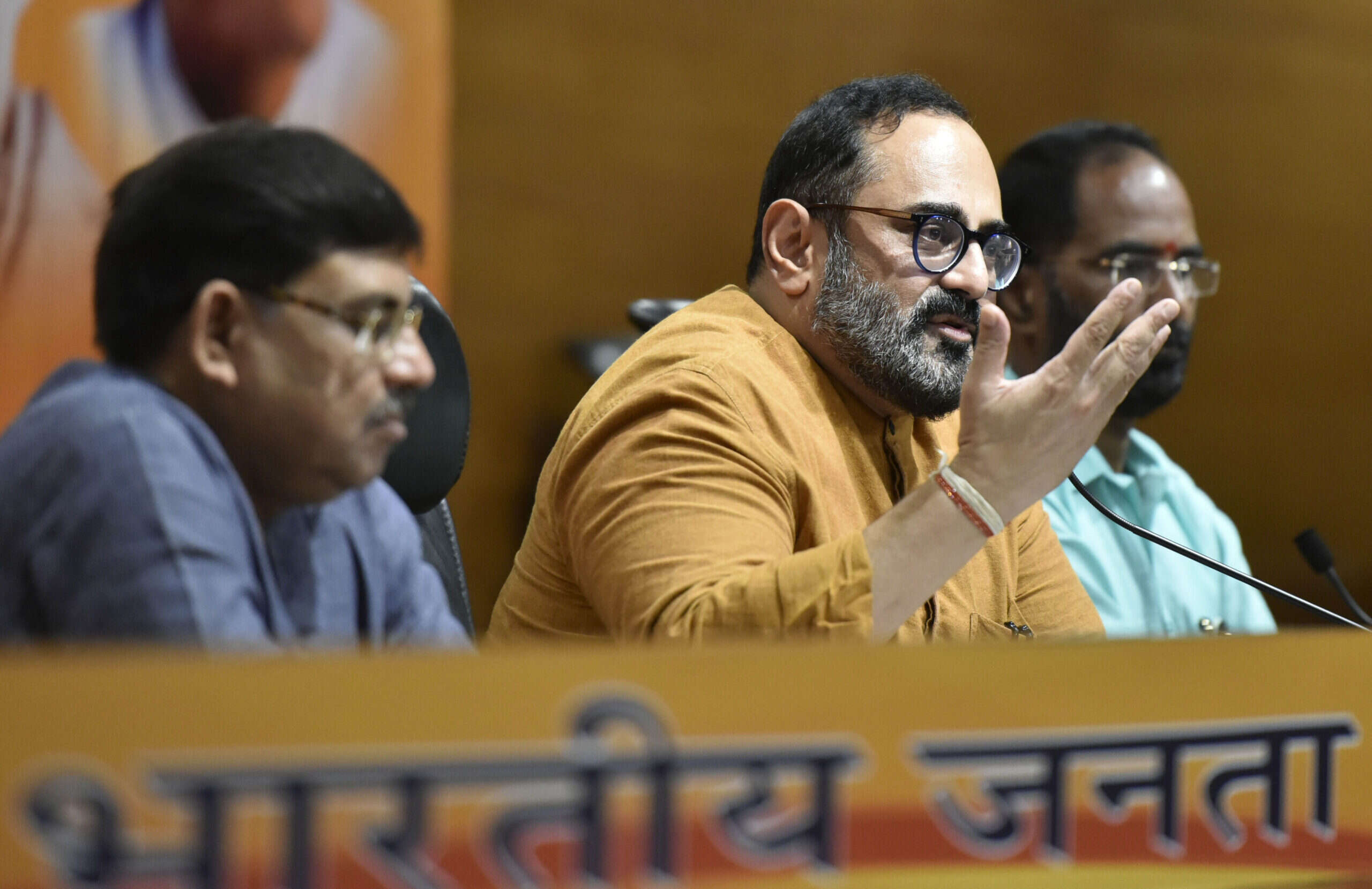
Over the past year, 36-year-old Fazil Mohammed has spent many a caffeine-fuelled night getting to grips with neural networks. In April, Mohammed was finally awarded his postgraduate certification in AI/ML from the International Institute of Information Technology in Bangalore — a qualification he has now parlayed into a new role at the deep-learning optimisation company Data Poem, situated on the opposite side of town.
Mohammed is one of numerous workers in India scrambling to keep up with the rapid rise of generative AI, which threatens to completely overhaul the technological landscape — not to mention the job market. “Learning about AI,” says Mohammed, “is of paramount importance.”
The Indian government agrees. “I have absolutely no doubt in my mind that India will be a significant pole in the universe of AI going forward,” pronounced Rajeev Chandrasekhar, minister of state for electronics and information technology, to the WION news channel in March. Chandrasekhar went on to extol the benefits already being felt from increased use of AI, and India’s ambition to help shape international guardrails for the development of the field. “We will be in the leading pact in terms of shaping the future of AI.”
India has a way to go before it catches up to the US and China in that respect, with annual private investment in the AI sector in both countries in the tens of billions of dollars. Then, of course, there’s the question of how generative AI will impact India’s expansive IT services industry, a sector which has helped solidify the country’s reputation as the world’s favourite back-office. The central premise behind many new LLM-derived products, after all, lies in their ability to automate the necessary but time-consuming processes that the Indian IT services sector delights in taking on. In February, JP Morgan warned that generative AI models like ChatGPT would indeed slow down market share gains and deflate pricing for the industry – a genuinely worrying prospect for a country that exported $106bn in IT services alone between 2021-22.

Generative AI could threaten India’s outsourcing market
India’s IT services industry has long been favoured by global conglomerates. Airlines like Swissair and British Airways were among the first to outsource their back-office work to the country in the 1990s, eager to take advantage of India’s lower wages, favourable labour laws and surplus of engineering and science graduates. IT companies quickly followed suit. Fast-forward to the present day, and what began as a form of cost arbitrage has now become a key source of high-quality talent and innovation for major companies throughout Europe and North America.
Will tools like ChatGPT change this equation? Saurabh Gupta thinks not. “In fact, it could be a big boon for it,” says the president of HFS Research, “but it will eliminate the mediocre services.” Gupta hopes generative AI will broaden the scope of work that India’s IT workers are able to accomplish and make their jobs more enjoyable. While India’s numerous back-office jobs have typically been “boring, mundane, and transactional,” Gupta believes tools like ChatGPT could open the doors to more creative and judgement-intensive roles — not to mention higher salaries.
India’s AI ambitions are not just confined to the preservation of its much-vaunted IT services sector. The country is also pursuing home-grown innovation. It already has a formidable talent pool. AI startups in India ranked fifth in terms of investment in 2022, according to Stanford University’s annual AI Index. In the same year, some 24.2% of GitHub AI projects were contributed by software developers from India.
Might India, then, have a hope of challenging US dominance in AI? That’s unlikely in the short- to medium-term, considering the maturity of the education and investment frameworks supporting the likes of OpenAI and Google in building new foundation models. Even so, explains Jibu Elias, if you’re the Indian government, “you don’t have to reinvent the wheel” to catch up with international AI rivals. India’s most promising innovations will be built on the back of existing models, predicts IndiaAI’s head of research and governance, and will involve fine-tuning models to maximise efficiency and economic value. “We Indians,” he says, “have a habit of surprising everyone.”
Gupta agrees. He argues that India’s IT services Industry can have the biggest impact by contextualising the large models built overseas, generating fine-tuned tools for everything from managing payroll to issuing mortgages. “While the US and China will focus on B2C [business-to-consumer] use cases, I think India can make a name for itself with the B2B [business-to-business] industry,” says Gupta.

Indian workers are ‘upskilling’
There’s just one problem with this plan: namely, a national brain drain that has seen India’s best and brightest tech talent flee for the sunny uplands and higher pay cheques of Silicon Valley. “You see Arvind Krishna, you see Satya Nadella, you see Sundar Pichai,” says Elias. “All of these wonderful people came from India — and that’s a big problem we have right now when it comes to generative AI.”
There are currently around 416,000 engineers working in AI in India, as well as demand for another 213,000, according to estimates from Indian tech trade association NASSCOM. Facing a clear shortage of talent, companies in India are offering big salaries to attract — and retain — talent.
This has sparked a surge of ‘upskilling.’ EdTech is booming in India as graduates like Fazil Mohammed seek to secure their own futures amid the rapid rise of AI. According to one recent survey, 83% of Indian workers intend to ‘upskill’ this year, compared with a global average of 74%.
Abhimanyu Saxena, co-founder of Bangalore-based e-learning startup Scaler, says he’s also noticed this recent boom in upskilling — especially in the fields of AI/ML. “Prudent professionals know that they must stay up to date in order to remain relevant for the industry,” he says. “Generative AI would not take away the jobs directly, but people who are expert in using these new age tools and drive much higher value for companies will be in much more demand compared to people who have outdated skills.”
Gupta is more circumspect. While there’s a temporary boom in courses promising to teach the art of using and creating AI, Gupta believes that these new technologies will ultimately change the kinds of skills and training that India’s future workers need to succeed. Basic coding won’t be sufficient anymore as tools like ChatGPT get better at programming, he argues. “I think it needs to be more about understanding the business context,” says Gupta, who predicts that so-called ‘soft skills,’ like communication and leadership, will also become a lot more important for the Indian economy, not least because “we’ll need creativity.”
While the US might lead the field in developing immense LLMs, Gupta and Elias both believe India will instigate its own generative AI boom by helping businesses fine-tune LLMs to solve problems effectively. Mohammed is equally optimistic — especially about India’s potential to use AI to solve deep-seated social challenges. “AI,” he says, “opens up endless possibilities for solving complex problems that were previously considered insurmountable.”






